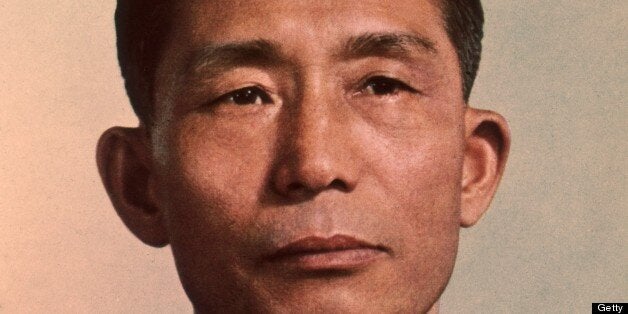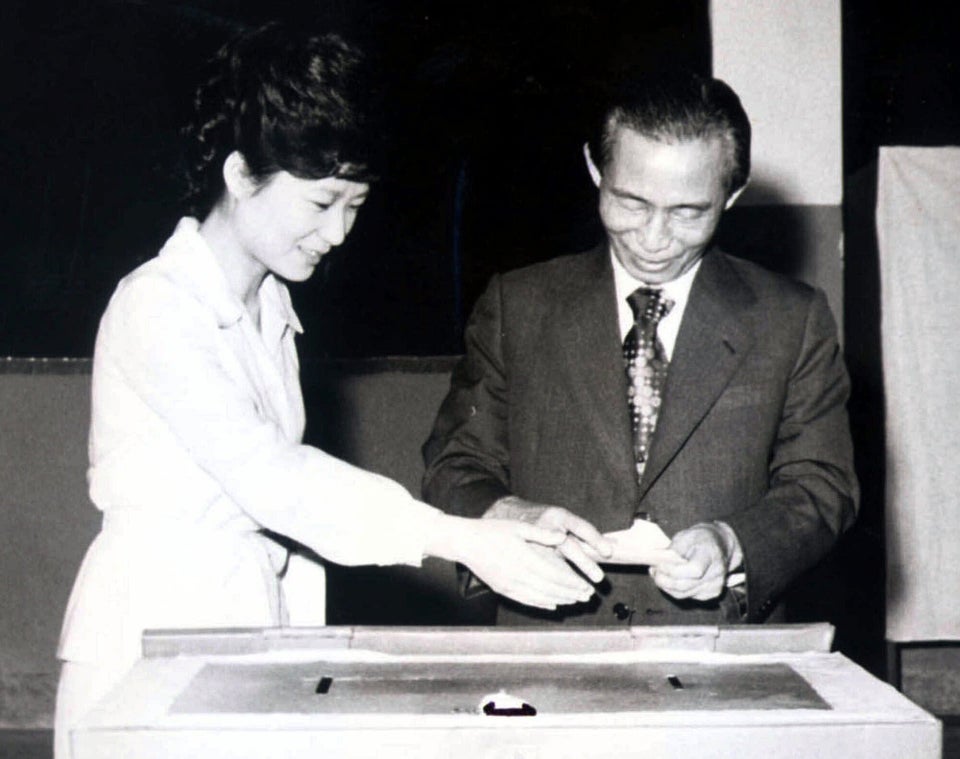Kim Shin-Jo has no doubt where the mission went wrong -- a crucial miscalculation that prevented his team of 31 elite North Korean commandos assassinating then South Korean president Park Chung-Hee 45 years ago.
"Had we killed them all, no alert would have been raised and I suspect we would have been able to achieve our objective," Kim told AFP.
The "them" were four South Korean villagers the commandos encountered on January 19, 1968, some 36 hours into what remains the most daring cross-border raid carried out in the six decades since the end of the 1950-53 Korean War.
The commandos' target was the presidential Blue House in Seoul where they planned to corner and execute Park, the military strongman who had seized power in a military coup in South Korea seven years earlier.
His assassination would, Pyongyang hoped, trigger a popular insurrection against the government and the US armed forces in the South and, eventually, a full-scale conflict.
The team had cut through the wire fence of the heavily-mined demilitarised zone (DMZ) that divides the two Koreas shortly before midnight on January 17, within 30 meters of a manned US military position.
The infiltration went smoothly and they made rapid progress towards the South Korean capital when they suddenly came across the four villagers who were out cutting wood.
According to Kim, a fierce debate ensued over whether or not to kill the villagers.
For reasons never entirely explained, they opted to offer the four some on-the-spot ideological training, and then let them go with a stern warning not to raise the alarm.
The villagers promptly went to the police and the alarm was duly raised.
The commandos still managed to get within a few hundred meters of the Blue House before they were confronted by South Korean security forces.
A vicious gunbattle broke out and the commandos scattered, only to be picked off in a series of encounters that lasted more than a week as South Korean troops swept the surrounding countryside.
In the end, all but two of the infiltrators were shot dead.
Kim was captured, while another commando reportedly made it all the way back to the North where he later became a general.
A bound Kim was paraded in front of the TV cameras and, asked what his mission had been, famously responded: "I came to cut Park Chung-Hee's throat."
Forty-five years later, Kim works as a Presbyterian minister on the outskirts of Seoul and in February he watched as Park Chung-Hee's daughter, Park Geun-Hye, was sworn in as South Korea's first woman president.
After his capture, Kim was interrogated for about a year and then, much to his surprise, was released, partly on the grounds that he had never discharged his firearm.
He publicly renounced the North, married a South Korean woman, converted to Christianity and finally became a pastor.
Park Chung-Hee was assassinated in 1979, but at the hands of his own security chief.
For years, the small mountain behind the Blue House, Bukaksan, where the gun battles between the commandos and the securities raged, was kept completely off-limits to the public.
It reopened in 2007 and is now an extremely popular hiking trail, although walkers must pass through a security check, wear a special badge and are forbidden to take photographs or stray from the well-guarded path.
Near the peak stands a natural monument to the 1968 raid -- a crooked pine tree pockmarked with bullet holes that have been ringed with red and white paint.
Copyright (2013) AFP. All rights reserved.
Our 2024 Coverage Needs You
It's Another Trump-Biden Showdown — And We Need Your Help
The Future Of Democracy Is At Stake
Our 2024 Coverage Needs You
Your Loyalty Means The World To Us
As Americans head to the polls in 2024, the very future of our country is at stake. At HuffPost, we believe that a free press is critical to creating well-informed voters. That's why our journalism is free for everyone, even though other newsrooms retreat behind expensive paywalls.
Our journalists will continue to cover the twists and turns during this historic presidential election. With your help, we'll bring you hard-hitting investigations, well-researched analysis and timely takes you can't find elsewhere. Reporting in this current political climate is a responsibility we do not take lightly, and we thank you for your support.
Contribute as little as $2 to keep our news free for all.
Can't afford to donate? Support HuffPost by creating a free account and log in while you read.
The 2024 election is heating up, and women's rights, health care, voting rights, and the very future of democracy are all at stake. Donald Trump will face Joe Biden in the most consequential vote of our time. And HuffPost will be there, covering every twist and turn. America's future hangs in the balance. Would you consider contributing to support our journalism and keep it free for all during this critical season?
HuffPost believes news should be accessible to everyone, regardless of their ability to pay for it. We rely on readers like you to help fund our work. Any contribution you can make — even as little as $2 — goes directly toward supporting the impactful journalism that we will continue to produce this year. Thank you for being part of our story.
Can't afford to donate? Support HuffPost by creating a free account and log in while you read.
It's official: Donald Trump will face Joe Biden this fall in the presidential election. As we face the most consequential presidential election of our time, HuffPost is committed to bringing you up-to-date, accurate news about the 2024 race. While other outlets have retreated behind paywalls, you can trust our news will stay free.
But we can't do it without your help. Reader funding is one of the key ways we support our newsroom. Would you consider making a donation to help fund our news during this critical time? Your contributions are vital to supporting a free press.
Contribute as little as $2 to keep our journalism free and accessible to all.
Can't afford to donate? Support HuffPost by creating a free account and log in while you read.
As Americans head to the polls in 2024, the very future of our country is at stake. At HuffPost, we believe that a free press is critical to creating well-informed voters. That's why our journalism is free for everyone, even though other newsrooms retreat behind expensive paywalls.
Our journalists will continue to cover the twists and turns during this historic presidential election. With your help, we'll bring you hard-hitting investigations, well-researched analysis and timely takes you can't find elsewhere. Reporting in this current political climate is a responsibility we do not take lightly, and we thank you for your support.
Contribute as little as $2 to keep our news free for all.
Can't afford to donate? Support HuffPost by creating a free account and log in while you read.
Dear HuffPost Reader
Thank you for your past contribution to HuffPost. We are sincerely grateful for readers like you who help us ensure that we can keep our journalism free for everyone.
The stakes are high this year, and our 2024 coverage could use continued support. Would you consider becoming a regular HuffPost contributor?
Dear HuffPost Reader
Thank you for your past contribution to HuffPost. We are sincerely grateful for readers like you who help us ensure that we can keep our journalism free for everyone.
The stakes are high this year, and our 2024 coverage could use continued support. If circumstances have changed since you last contributed, we hope you'll consider contributing to HuffPost once more.
Already contributed? Log in to hide these messages.

